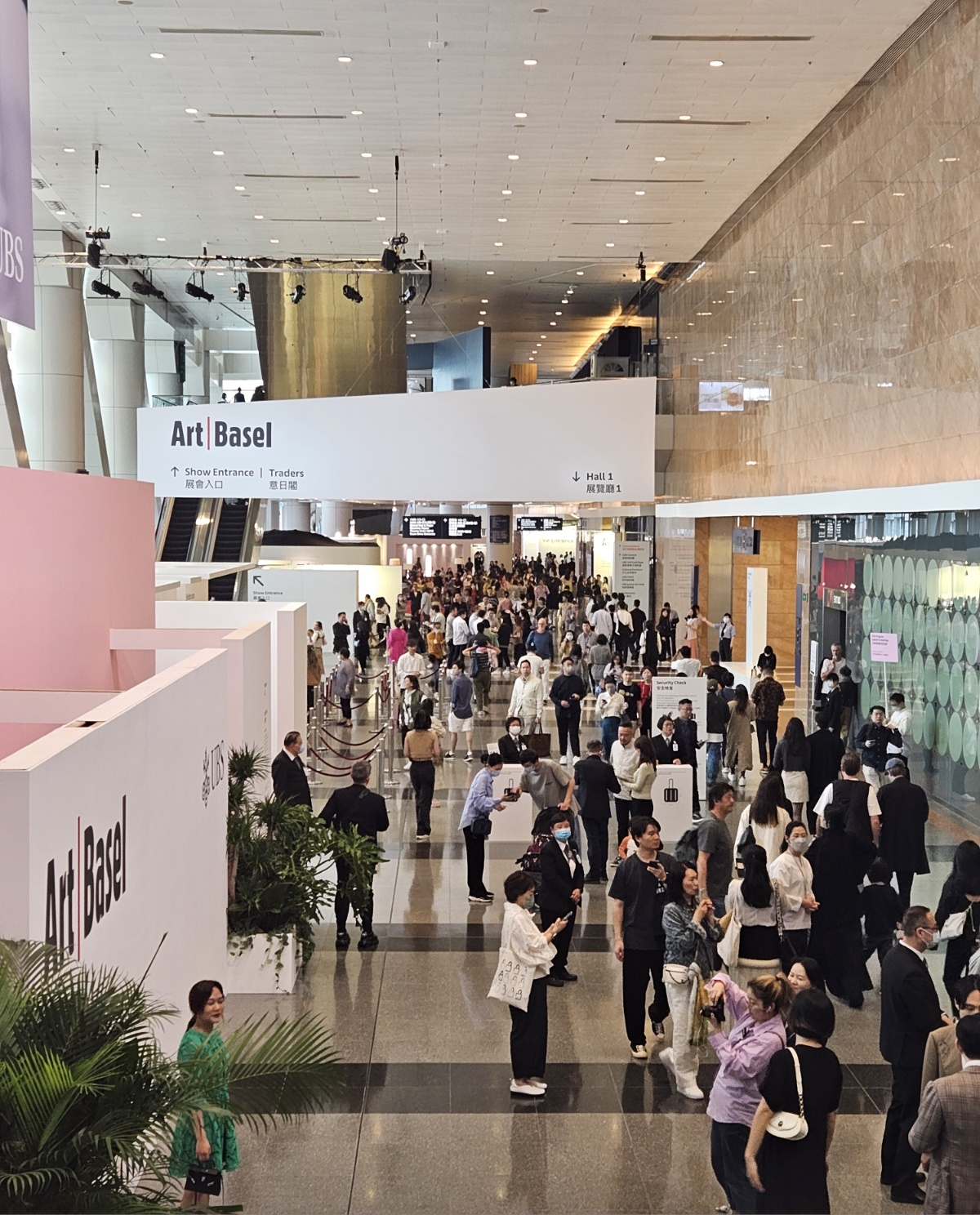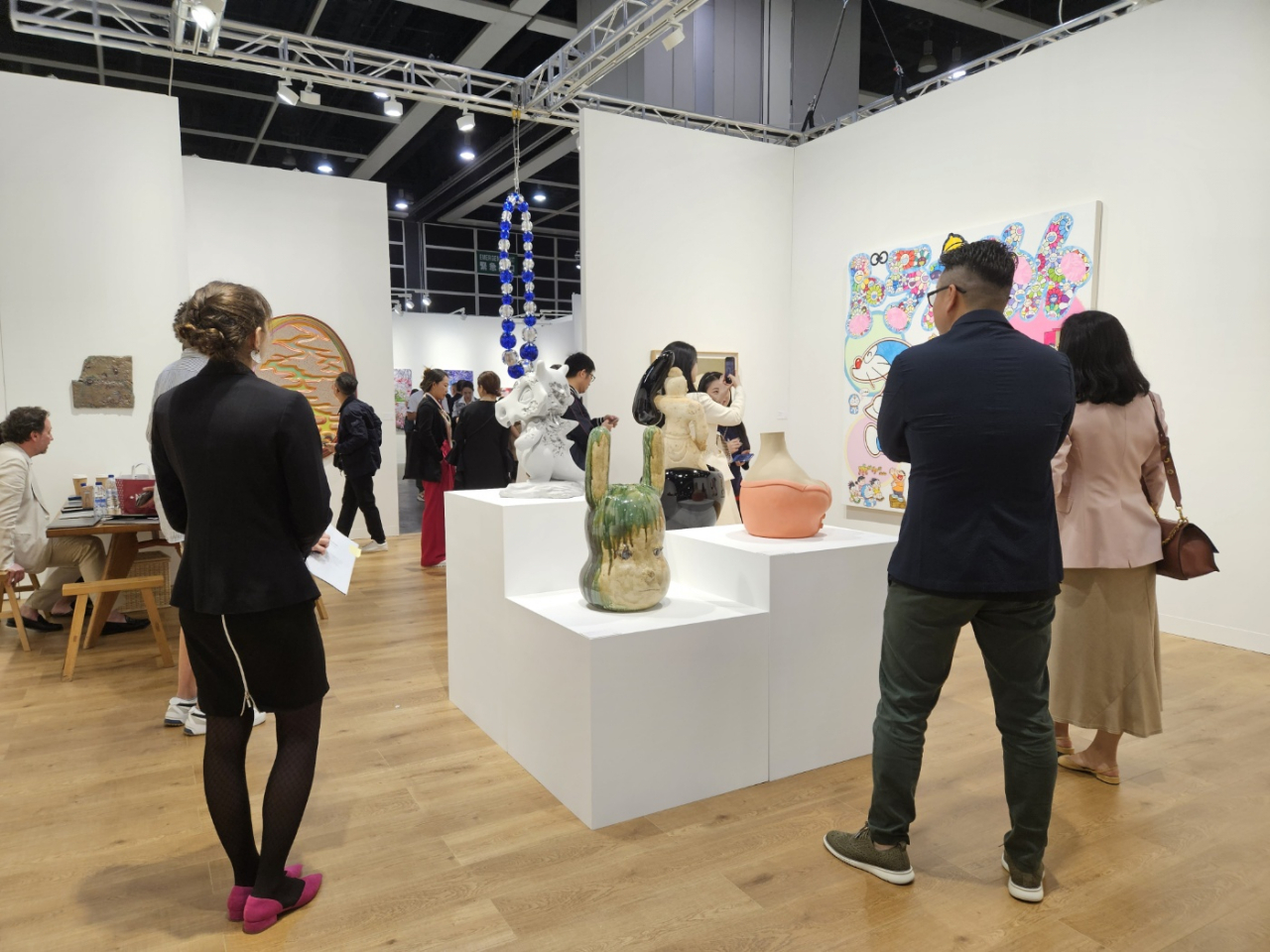[Feature] Commercial, academic collaboration revives Hong Kong art scene
While some doubt the city's future as Asia's art hub, many more see no other Asian city replacing Hong Kong, for now
By Park YunaPublished : March 29, 2023 - 08:33

HONG KONG -- Hong Kong's art scene got back into full gear last week, drawing international visitors back to Asia’s premier art fair -- Art Basel Hong Kong -- as well as to the city’s West Kowloon Cultural District, anchored by the recently opened contemporary art museum, the M+.
The Hong Kong Palace Museum, also part of the district, completed its renovation and opened to the public in 2022 to show more than 900 pieces of treasure from mainland China.
The West Kowloon Cultural District is the Hong Kong government’s largest cultural development project, stretching across 40 hectares of reclaimed land, blending together spaces for the arts, education, open space, commercial facilities and dining facilities.
“(This week) we have Art Basel, the West Kowloon Cultural District, art galleries and Museum Summit (a gathering for museum professionals). So the Hong Kong cultural scene is coming altogether for international guests,” said Eve Tam Mei-yee, deputy director of Hong Kong's Leisure and Cultural Service, at a press conference on Friday, opening Museum Summit 2023 at the Hong Kong Convention and Exhibition Centre.

Hong Kong Art Week, from March 19-25, saw a slew of cultural events, shows and parties taking place around the entire city to coincide with Art Basel Hong Kong.
This year's art week was a special one as the Hong Kong Special Administrative Region Government went to great lengths to promote its cultural scene to the international audience for the first time since lifting pandemic restrictions.
The third edition of Museum Summit was held Friday to Saturday in association with the Gallerie degli Uffizi of Italy, bringing together 35 leading figures from world-renowned museums and institutions in 16 countries to share professional experiences.
“We are inclined to work with the commercial sector because we see the win-win situation. (British auction house) Phillips moved into West Kowloon and Art Basel has collaborated with M+ with commissioned work. All Art Basel guests will be invited to tour the museums,” Betty Fung Ching Suk-yee, chief executive officer of the West Kowloon Cultural District Authority, told The Korea Herald.
“In the future, more of the galleries can set up headquarters in West Kowloon, because we do have special space for them.”

Fully returning after four years, Art Basel Hong Kong was visited by 86,000 people. Asia’s largest art fair was joined by 177 galleries from around the world, two-thirds of which are operating a gallery in Asia.
Although the fair was slightly smaller in scale compared to the one before the pandemic as registration for the event had been occurring before the city lifted most of its COVID-19 related restrictions in January, some galleries had vigorous sales backed by collectors from mainland China and Hong Kong.
At Hauser & Wirth, “A Straight Line,” a painting by American painter Mark Bradford, was sold for $3.5 million, while at Ota Fine Arts, Japanese artist Yayoi Kusama’s “Pumpkin” was sold for $3.5 million to a private collector in Asia, according to a sales report.
Greater China ranks as the second-largest regional art market, accounting for 20 percent of worldwide sales by volume, according to the latest edition of the UBS Global Art Market report.

The Hong Kong Museum of Art -- the oldest public museum in Hong Kong, established in 1962, housing an art collection of more than 18,800 items including Hong Kong modern art and Chinese antiques -- presented the show, “Joan Miro -- The Poetry of Everyday Life,” to coincide with Hong Kong Art Week.
Meanwhile, K11 Musea, a museum-retail complex located on the waterfront of Tsim Sha Tsui, is presenting “City As Studio,” an exhibition of graffiti and street art by more than 30 artists from New York, Los Angeles, San Francisco, Sao Paulo, Paris and Tokyo curated by Jeffrey Deitch, a prominent curator, dealer and adviser based in the US.
M+ is showcasing “Yayoi Kusama: 1945 to Now,” Asia's largest retrospective ever of the Japanese artist outside Japan, which runs through May 14. Swiss media artist Pipilotti Rist's “Hand Me Your Trust,” commissioned by the museum, Art Basel and UBS, covers the museum's facade.
Cautious mode deep down
Hong Kong was not able to avoid questions over the political unease stirred by the HKSAR government's passage of the extradition law in 2019 and the mainland Chinese government's implementation of the National Security Law in 2020 -- criminalizing secession, subversion, terrorism and collusion with foreign organizations -- which sparked large-scale pro-democracy and independence protests in the city.
When M+ opened in 2021, the museum received global attention for removing Chinese artist Ai Weiwei’s controversial photo of himself giving the middle finger to Tiananmen Gate from its website.
“Have you seen works by Ai Weiwei at the Sigg Collection show?” said an official from the museum, denying any censorship of the museum’s curatorial direction. The museum is currently showing “M+ Sigg Collection: From Revolution to Globalization,” a large-scale exhibition of works donated by Uli Sigg, a former Swiss ambassador to China and businessperson. The show includes Ai’s “Whitewash," which consists of 126 white or earth-tone jars.

But the first question raised at the Art Basel Hong Kong press conference on Tuesday was about any possible censorship of artworks presented at the commercial art fair.
“In terms of censorship, we don’t have any censorship process in the show. We have not changed the way we operate since 2013. We have our application process and selection process as per previous shows,” said Angelle Siyang-Le, director of Art Basel Hong Kong, denying that any piece had been declined for political reasons.
“A lot of people are now interested in coming back to Hong Kong to see how Hong Kong is returning. Even though Art Basel Hong Kong this time is not the show it was several years ago, we have seen enough to know that there is still tremendous energy here,” John McDonald, an art critic based in Australia, told The Korea Herald.
“I think the next few years will see that confirmed,” he added.






![[KH Explains] How should Korea adjust its trade defenses against Chinese EVs?](http://res.heraldm.com/phpwas/restmb_idxmake.php?idx=644&simg=/content/image/2024/04/15/20240415050562_0.jpg&u=20240415144419)












![[Today’s K-pop] Stray Kids to return soon: report](http://res.heraldm.com/phpwas/restmb_idxmake.php?idx=642&simg=/content/image/2024/04/16/20240416050713_0.jpg&u=)